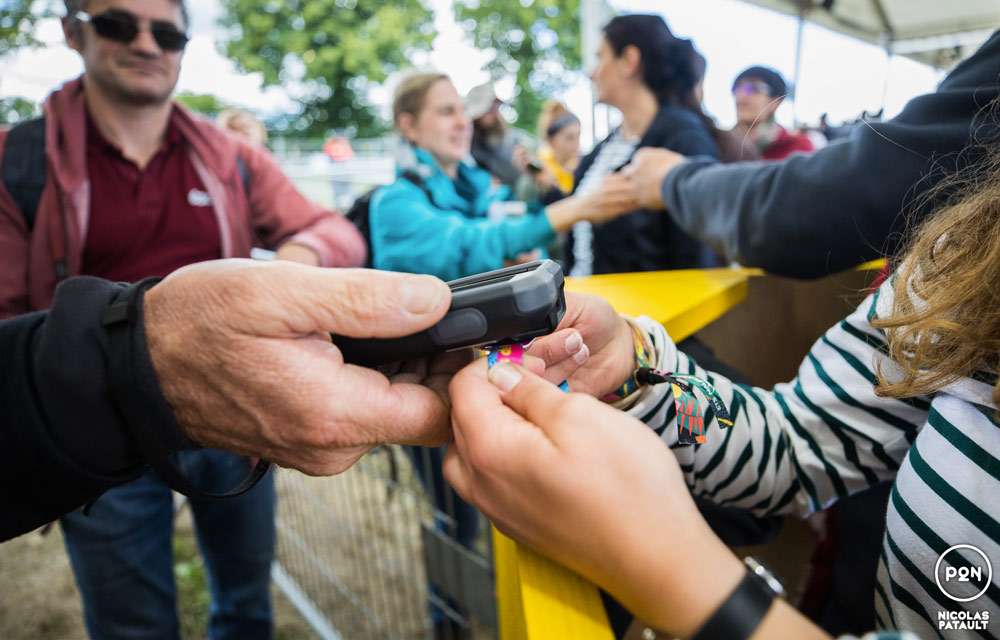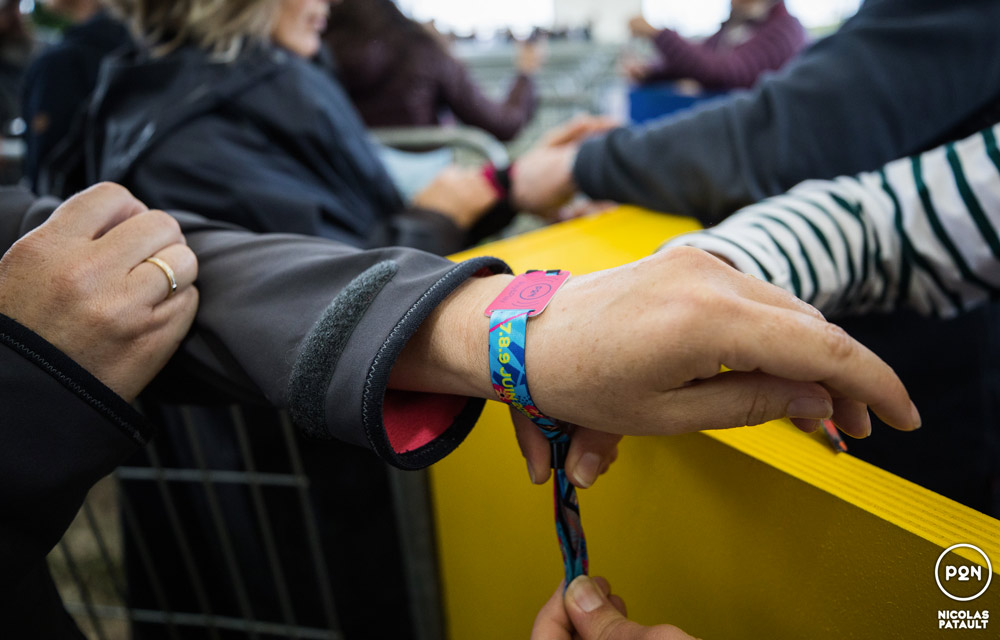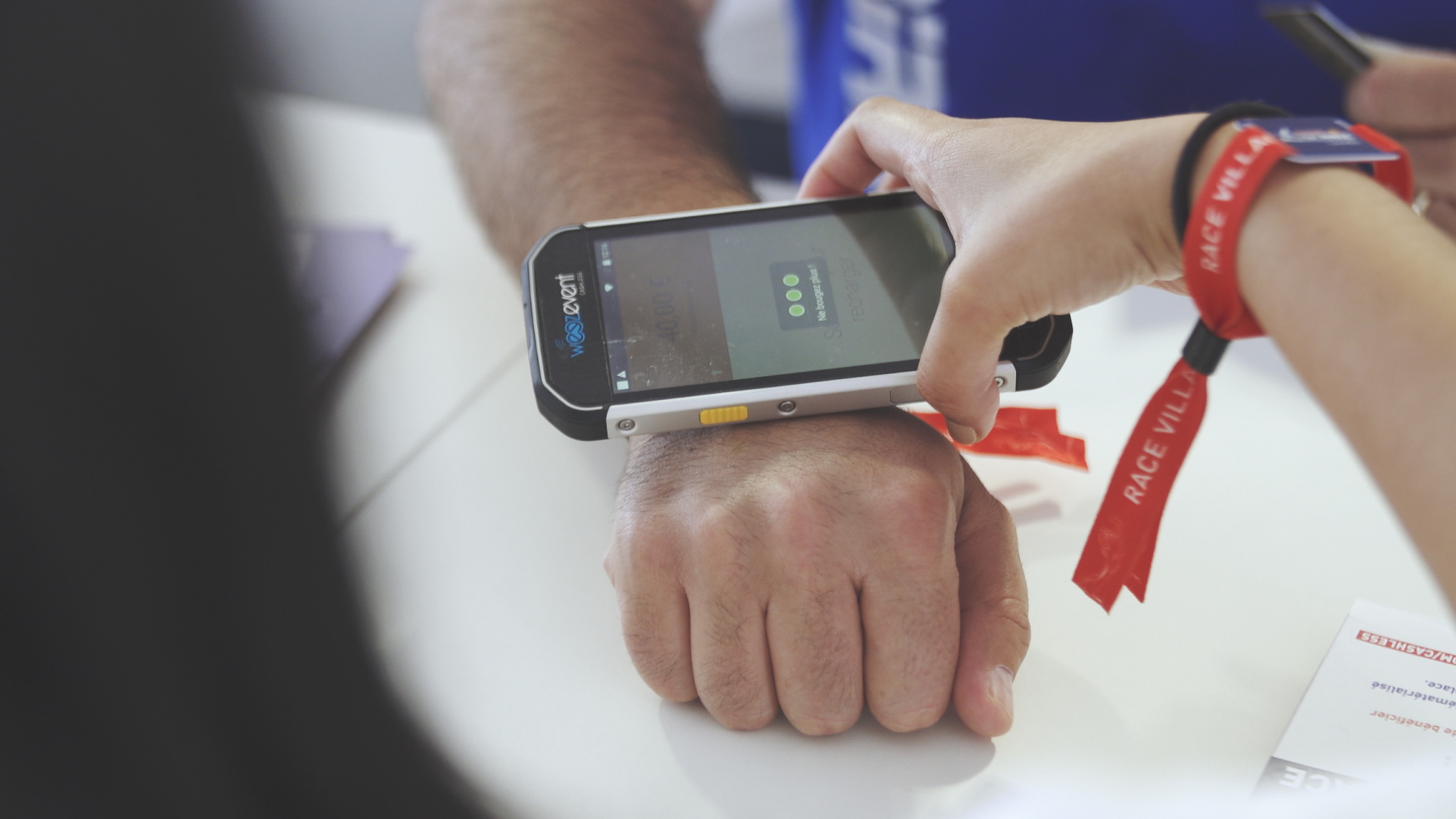Table of contents
- Choosing a payment ecosystem
- Which price policy?
- Should you choose a name?
- Which NFC device should I choose?
- Where should we hand out the pre-loaded NFC devices?
- How to set-up banks?
Once costs and benefits (link) have been thoroughly analysed and the methods of roll-out and training (link) are well understood, we can now talk about the cashless system in a practical way. How do you physically set it up? Which formula is best suited to you?
Each event thinks and implements their cashless payment system in their image, there is no universally right way to go about it. The best approach is one that is designed with the event manager’s wishes and requirements in mind, so as to end up with a tailored system.
1. Choosing a payment ecosystem
One of the first choices to make is that of the payment ecosystem.
Actually, there are three implementation scenarios:
- 100% cashless: That is the most popular mode nowadays, because it is also the simplest for attendees. Cashless payment is mandatory and exclusive at all points of sale. This scenario allows for speedy transactions and offers the possibility to operate entirely offline if needed. Communication, so critical for a first edition, is also made easier.
- No cash: This is a hybrid mode whereby attendees can either pay by bank card or cashless at points of sale, or using mobile payment systems such as LytPay or PayLib. This solution was adopted by the Fan Zone of the 2016 European Football Championship in Paris. The benefit of that system is the absence of cash at all points of sale while maintaining flexibility for attendees to use the cashless payment system or not.
- Pay as you like: All means of payments are allowed in addition to cashless. This is recommended if the cashless payment system is used only by members of a club or by a selected segment of the attendees. Use of the cashless payment system must then be incentivized with a series of benefits, such as dedicated queues or specific discounts. If it can be reassuring by leaving attendees the possibility to use their usual means of payments, this scenario often leads to low levels of adoption of a cashless device, which can then be counter-productive considering the level of investment made and the positive impact we are deprived of.
2. Which price policy?
The price policy is also a decision to be made by the event planner. Should you charge activation fees? Should you charge refund processing fees? What timeline to set for refund requests?
All combinations exist. While it is common to apply £1 as activation fees, it is quite rare to ask for refund processing fees. It is often poorly perceived by the public and does not encourage adoption of the system.
Some events, such as the Vieilles Charrues festival have opted for a fully free system for festival goers and automatically process refunds after the festival to the bank card registered by the cashless account user.
The most common mode is to apply a £1 activation fee at first top-up and to leave 2 weeks to attendees to ask for a refund of their outstanding balance online.
3. Should you choose a name?
While the majority of event managers use the term “cashless” to call this system, others have designed a dedicated name and logo!
Here are some examples of cashless branding and names reinforcing the universe created by the event:
- John E-Cash: Festival Beauregard
- P2N Pay&Play: Festival Papillons de Nuit
- Moneiz: Festival des Vieilles Charrues
- Celti’Cash: Festival Interceltique de Lorient
- Bobicash: Festival Bobital
- No Cash In Hell: Festival Hellfest
These names integrate the cashless payment system into the overall communication campaign of the event. A fun name, aligned with the event’s identity encourages cashless adoption. The term “cashless”, however neutral, can be poorly perceived because of the “cash” root of the word being too associated with money.
The naming strategy can be so efficient as to spread. It is not uncommon for festival-goers to speak of Moneiz – the cashless system of the Vieilles Charrues festival – in other areas of Brittany.
4. Which NFC device should I choose?
NFC chips can be integrated to a lot of items: keyrings, glasses, necklaces, silicon watches, or a simple sticker.
But in the context of cultural events and festivals, cards and wristbands are the most popular among event managers and attendees alike.
Here are some considerations to help you choose the most suitable NFC device:
| Benefits | Drawbacks | |
| NFC cards |
|
|
| NFC wristbands |
|
|
An expert look!
Although slightly more expensive at first, the cost of implementing wristbands can be managed by limiting the number of series. Instead of producing 10 different kinds of wristbands, you can produce NFC wristbands with a unique design and still manage different type of access thanks to the data stored on the chip.
5. Where should we hand out the pre-loaded NFC devices?
Who says top-up ahead of time, says handing out NFC devices. But be careful, remember that one of the promises of cashless is speed and flow! This step is therefore critical to a good user experience.
We have identified 5 scenarios to hand out the NFC devices:
- At cashless banks: Attendees show their ticket at any cashless bank to pick-up their pre-loaded NFC device. This scenario is quite disappointing because it requires attendees to queue like everyone else. They are not rewarded for having topped-up ahead of time.
- At dedicated kiosks: Attendees show their ticket at a dedicated kiosk. A tempting scenario on paper which can quickly turn to disappointment if the kiosk is not the right size or if these kiosks are hard to spot and locate. The nightmare scenario would be to have smaller queues at the general banks than at the dedicated kiosks. Furthermore, in the case of a multiday event, kiosks are often underused after day 1.
- At access control points: Attendees show their ticket at access control points, if they have pre-loaded their cashless account then the NFC device will be handed out immediately. That way, attendees only wait once, and as soon as they are on site they are ready to purchase food & drinks without having to queue another time. The promise of flow is met. The attendee doesn’t even have to think about it, it’s magical! However, the operation on the first day is longer than a simple scan and this must be anticipated to adjust your entrance control.
- After the entrance: Attendees show their ticket once at access control, then once more a few metres down the road to pick-up their NFC device. While this scenario enables a good flow for the attendee in practice, it also requires a lot of staff because there are two teams at the entrance.
- At home (mailing): Attendees receive their device at home by mail. While this improves the experience, it also increases expenses significantly. This scenario works for events that are sold-out well ahead of time.
6. How to set-up banks?
1. How many cashless banks?
In theory, it seems obvious that a high number of banks is a good option. After all, more banks mean a better user experience. They don’t have to walk far to find a bank.
In practice, we have seen the contrary. A high number of banks means differences in waiting times. Some banks are overcrowded while others are underused. And this is emphasised by the scheduling and the movements of the audience from one space to another.
It is always better to set up one large bank in an area that is not too crowded, even if that means the audience has to walk a bit more. This also tends to limit the number of top-ups and therefore reduce infrastructure and security costs.
Creating a media area close to this unique bank with a Wi-fi hotspot can enable attendees to easily top-up their account online.
2. What kind of equipment should you choose?
The choice of equipment has a strong impact on the user experience. There are 2 types of cash terminals:
- Fixed point of sale systems: Those are difficult to roll-out because they need to be fixed to counters and require a power supply and night watch, which is why fixed point of sale systems are mainly used for long-term events or permanent infrastructures. They also have the drawback of not being highly suitable for the use of NFC wristbands because they require the attendee to physically move all the way to the point of sale system. Also, there are often fewer point of sale systems than bartenders, creating a bottleneck in the service and, thus, impacting the user experience.
- Mobile terminals: On the contrary, mobile terminals allow for easy roll-out and transportation. Working on battery, they provide highly flexible use. The bartender approaches the device to the attendee’s wristband or card to process the payment and not the other way around. Each bartender has their own device so as not to be delayed by co-workers processing other customers’ payments.
Keep an eye out for a future post addressing how to successfully roll out cashless systems!
To go further and find out more about cashless systems, download our free white paper here.


